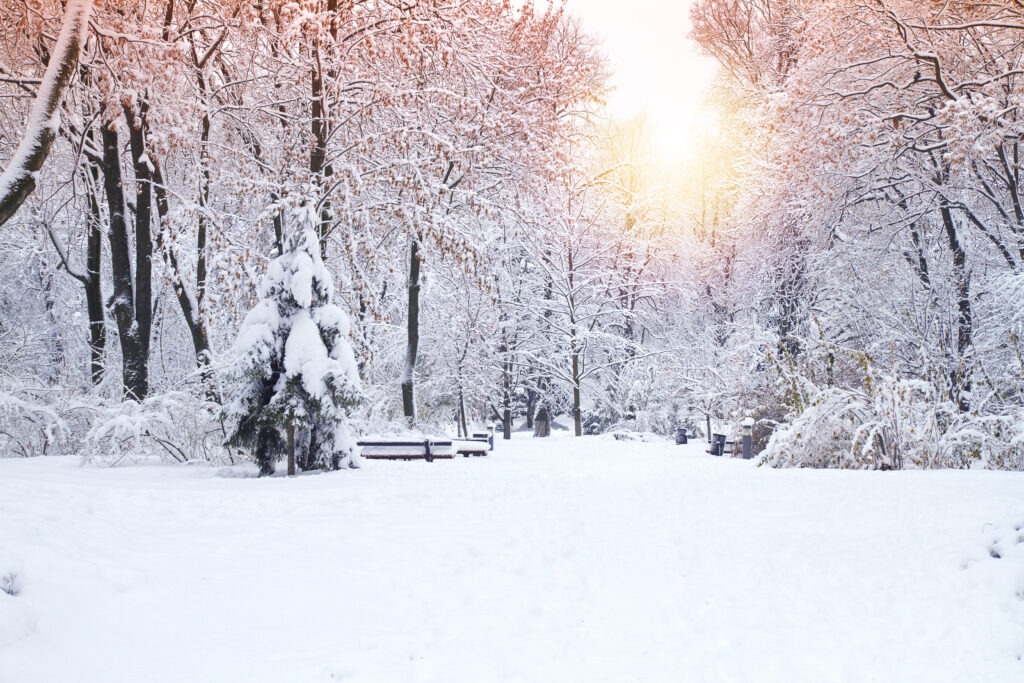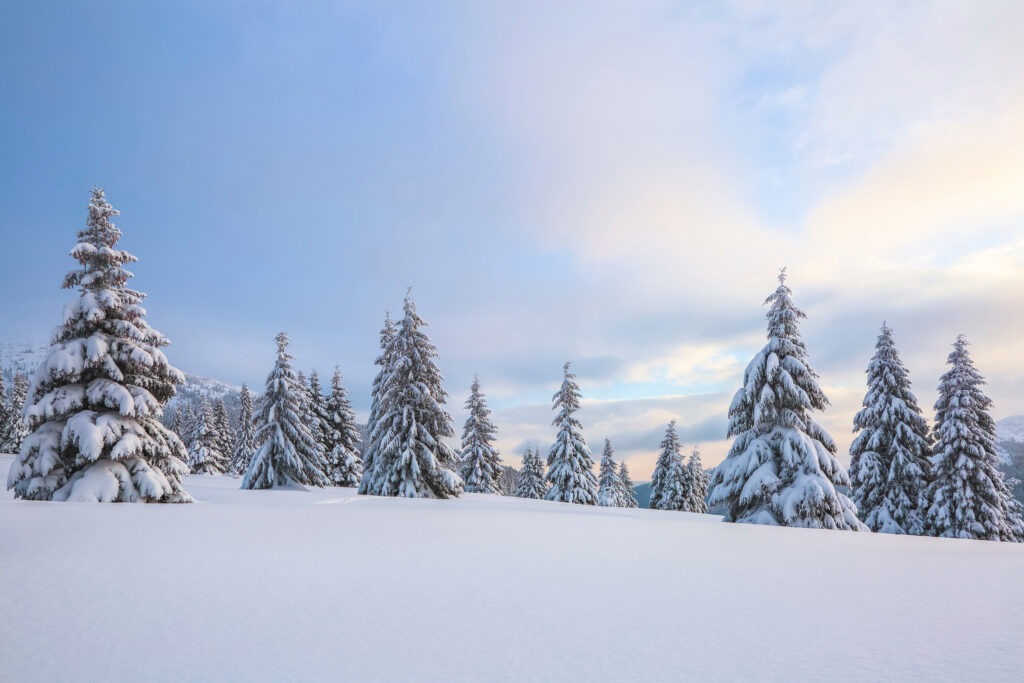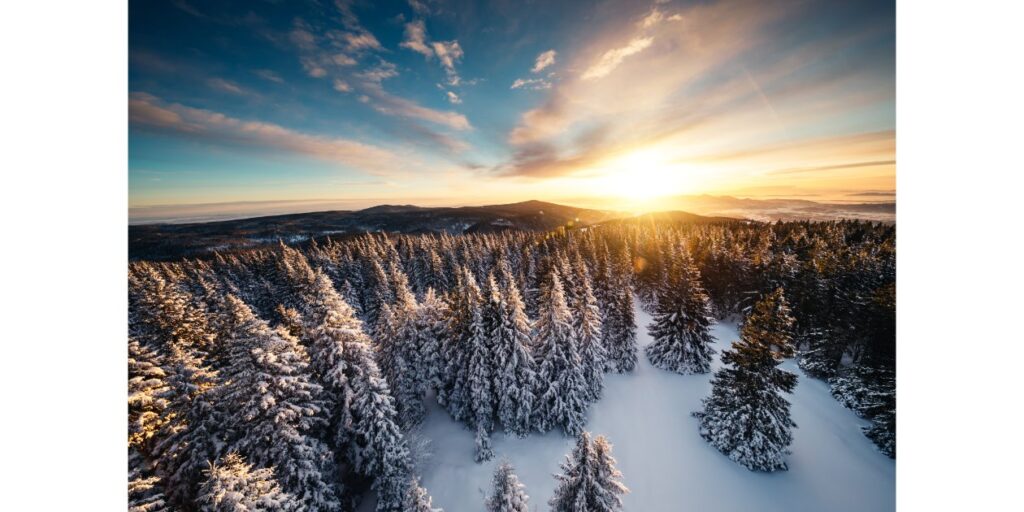Winter in the Mid-South brings a stunning, frosty landscape, transforming our trees into icy silhouettes against the crisp sky. However, this chilly season also ushers in various challenges for our arboreal friends. At Red’s Tree Service, our seasoned team is well-versed in addressing these seasonal tree hazards. It’s time to uncover the most common tree hazards during these chilly months and discover strategies to help our arboreal allies flourish despite the cold.
Winter Woes: Unveiling Tree Hazards in the Cold
The serene beauty of winter often masks the hidden threats it poses to our trees, transforming them from robust pillars to vulnerable beings. Let’s shed light on the most frequent challenges trees face as the temperature drops:
- Heavy Snow and Ice: The weight of snow and ice can strain branches, especially for younger or weaker trees.
- Frost and Freeze Damage: Sudden temperature dips can damage cells in tree branches, making them brittle.
- Winter Drought: Trees can suffer from a lack of water, as frozen ground makes moisture absorption difficult.
- Rodent and Deer Damage: Seeking shelter and food, these animals can harm tree bark and branches.
Grasping these hazards is the first step in safeguarding our trees. Up next, we’ll discuss preventative strategies, demonstrating how proactive measures from Red’s Tree Service can make a significant difference in protecting our trees through the winter.

Bracing for Winter: Proactive Measures for Tree Care
As the chilly season approaches, it’s crucial to take steps to protect our trees from the harsh elements. Here are key preventative strategies to ensure your trees remain strong and healthy through winter’s trials:
Proper Pruning:
- Trimming weak branches before they become laden with snow can prevent breakage. Strategic pruning also aids in maintaining the tree’s overall structure and health, reducing the risk of damage from winter storms.
Mulching:
- Applying a layer of mulch around the tree base helps retain soil moisture and regulate temperature. This insulation layer also provides essential nutrients and protects roots from extreme cold snaps.
Hydration:
- Watering trees deeply before the ground freezes ensures they have enough moisture to last through winter. Adequate hydration is key to preventing desiccation, especially for evergreens, which lose more water in winter.
Wrapping Young Trees:
- Protecting the bark of younger trees with wraps can fend off cold damage and animal activity. Wraps act as a shield against frostbite on the bark and deter wildlife from using the tree as a food source.
Implementing these measures can greatly reduce the risk of winter damage to your trees. Coming up, we’ll focus on identifying trees at higher risk during winter, a key aspect of Red’s Tree Service’s comprehensive winter care approach.
Spotting the Signs: Identifying At-Risk Trees in Winter
Winter brings unique challenges, and some trees are more susceptible to its effects than others. Recognizing the signs of at-risk trees is crucial for timely intervention. Let’s break down what to look out for:
- Visual Health Check: Examine your trees for signs of stress, like cracks in the bark, dead branches, or a leaning trunk. These symptoms can indicate a tree struggling to cope with winter conditions.
- Frost Response: Look for signs of frost damage, such as discolored or wilted foliage, which can be more pronounced in certain tree species.
- Moisture Levels: Check the soil moisture around your trees. Dry soil in winter can be a sign that your tree is not getting enough water to withstand the cold.
- Animal Activity: Increased animal activity, like bark stripping, can stress trees further, making them more vulnerable to winter damage.
By staying vigilant and spotting these signs early, you can take steps to protect your trees. Now it’s time to discuss what to do if you find your tree has suffered winter damage.

Responding to Winter Tree Damage
If you encounter a tree that has suffered from winter damage, rely on professionals like Red’s Tree Service, who are equipped with the expertise and tools to handle such situations safely.
First, we’ll conduct a thorough assessment to understand the extent of the damage. This might include checking for broken or hanging branches, split trunks, or signs of disease exacerbated by winter stress. It’s important to remember that safety comes first; don’t attempt to remove large branches or climb the tree yourself. Instead, allow the professionals at Red’s Tree Service to step in.
If the damage is severe, professional tree removal might be necessary to prevent potential hazards. In less critical cases, proper pruning can help the tree heal and regain its strength. Post-damage care is also vital – this could include additional mulching, watering, or even structural support for the tree.
Lastly, let’s explore why Red’s Tree Service is the premier choice for expert tree care during winter and beyond.
Red’s Tree Service for Winter and Year-Round Tree Care
Choosing Red’s Tree Service for your tree care needs means benefiting from our exceptional service, which includes:
- Unmatched Expertise: Our team is deeply knowledgeable and equipped with advanced tools to ensure expert care for your trees.
- Comprehensive Care:
- Meticulous winter preparations
- Prompt emergency responses to storm damage
- Proactive health maintenance
- Seasonal Versatility: Our services are tailored to meet the unique challenges of each season, safeguarding your trees year-round.
- Commitment to Health and Beauty: We are dedicated to maintaining the vitality and aesthetic appeal of your trees.
- Customer Satisfaction: Our top priority is your satisfaction, reflecting our dedication to quality service.
Trust in Red’s Tree Service for unparalleled tree care that keeps your landscape flourishing, no matter the season.

Securing Your Trees with Red’s Expertise
Navigating winter’s challenges requires a blend of knowledge, skill, and dedication – all qualities that Red’s Tree Service embodies. With our comprehensive approach to tree care, we ensure your trees stand resilient through winter and beyond. For expert guidance and peace of mind, contact us at (901) 424-4548. Let’s keep your landscape vibrant and safe, season after season.
